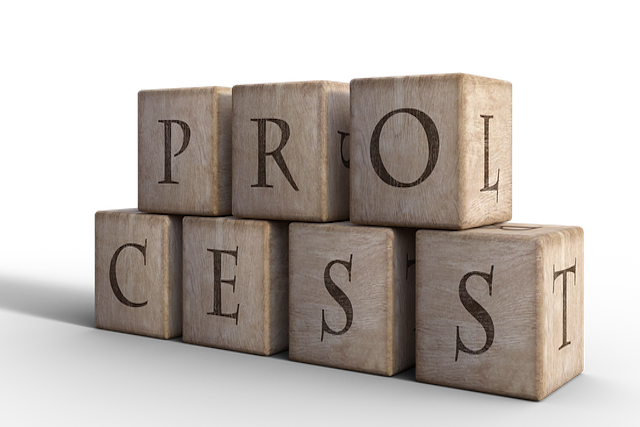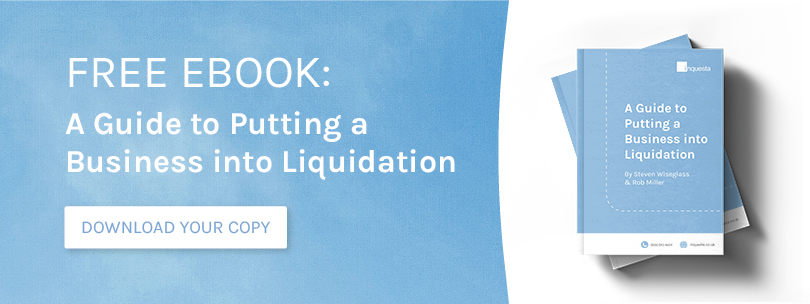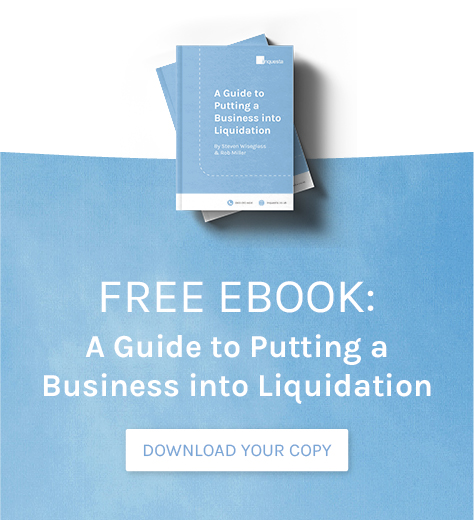The company liquidation process is comparable to navigating a long and winding road in the dark — there are potential dead ends and stumbling blocks around every corner. That is, unless you have an insolvency professional in your corner to help light the way. The start of the liquidation process signals the beginning of the end of a company as a legal entity. However, within this journey, there are important decisions to be made.
There are a variety of different choices to liquidate your company, each with pros and cons. For example, compulsory liquidation which is initiated by creditors, Members Voluntary Liquidation (MVL) for a tax-efficient exit from solvency, and Creditors Voluntary Liquidation (CVL) for companies facing insolvency. No matter which option is most appropriate for you, swift and decisive action is key.
Join us as we navigate the journey through liquidation. From exploring optimal choices, the challenges you could face, and the crossroads you can expect to be waiting for you once the process is complete.
What is Liquidation of a Company?
Company liquidation is the process of closing down a limited company with the help of an appointed Insolvency Administrator, also known as a liquidator. The liquidator is brought into the business to ‘wind up’ all ongoing affairs until, at the end of the process, the company is brought to a close.
Depending on the solvency of your business, there are several ways in which it can be liquidated. Once you have decided that closing your company is the only option, you should contact a licensed insolvency practitioner who will gain a thorough understanding of your circumstances and recommend the best course of action for you to take.
What Types of Company Liquidation Are There?
Company liquidation offers three distinct paths:
- Compulsory Liquidation: Forced upon a firm by creditors via a court petition.
- Members Voluntary Liquidation: A more tax-efficient choice for solvent businesses
- Creditors Voluntary Liquidation: Initiated by insolvent companies to close their operations responsibly
This selection will ultimately determine the fate of your business, making it crucial for you to get right.
The variation of company liquidation you ultimately decide on (or is decided for you) will depend on your situation, your business, and your preference. Further information on the three core company liquidation methods are as follows:
Compulsory Liquidation
As the name suggests, this course of action is forced upon the company’s directors by their creditors. If they are not paid what they are owed, creditors can petition the Courts for a business to be liquidated because they believe it is incapable of meeting its obligations.
More often than not, HMRC will be the main creditor due to unpaid taxes such as Corporation Tax, VAT, Pay As You Earn (PAYE) or National Insurance Contributions (NIC). Trade creditors, such as suppliers, will also be able to take action if they believe they are unlikely to be paid what they are owed.
The compulsory liquidation begins when your creditors apply for a Winding Up Petition, which is basically a request to the Court to shut down your business. If this happens, it is essential that you act quickly as time is running out to save your company.
Should there be no response to the Winding Up Petition within seven days of it being issued, your company will then be sent a Winding Up Order to force you to close.
Your first port of call on receipt of a Winding Up Petition should be to consult with a licensed insolvency practitioner, such as Inquesta. They will talk you through all of the options available to you and recommend what they believe is the best course of action for you to take.
Members’ Voluntary Liquidation (MVL)
A MVL can be requested if your company is solvent but you still wish to close it down. It is the most popular option with business owners as it is the most tax-efficient way to stop trading.
There is no Court agreement in this procedure, so it can just be carried out with the help of a specialist insolvency practitioner. The process is especially useful if your business has a complex operational structure or a wide range of assets, since it is designed to help you keep as much of your money as possible.

Creditors’ Voluntary Liquidation (CVL)
If your business has reached the point that it is no longer considered solvent, you can initiate the process of closing down your business by using a Creditors Voluntary Liquidation. Once you have realised that your company is insolvent, it is imperative that you do not take any more lines of credit or make preferential payments to certain entities that you owe money to.
Should you do either of these, the liquidator could view this as worsening the position of your other creditors. You will also need to cease trading immediately and speak to a licensed insolvency practitioner to guide you through the process.
Since many small companies do not keep an accurate record of their cash flow, they may not actually realise that they have actually gone insolvent. It is therefore a good idea to speak to a specialist insolvency company who can carry out a thorough assessment of your financial situation to determine your liquidity status.
Trading while insolvent means you run the risk of having a claim brought against you for wrongful trading. If it is successful, you could be held personally liable for your company’s debts, so it is essential that you find out where you stand as soon as possible.
How to Liquidate a Company
The exact steps of the company liquidation process depend largely on the method you use to close your business and whether you were forced into it by your creditors or decided to do it voluntarily. If you shut down your enterprise under your own volition, a more orderly dissolution can take place. This method enables you to have more involvement in the sale of your assets.
In contrast, a court-ordered or involuntary liquidation is taken completely out of your hands.
Whichever method is chosen, there are a number of steps that need to be carried out by the licensed insolvency practitioner in collaboration with the company director. These include:
- Appoint a licensed insolvency practitioner
- Compile a list of all your creditors
- Identify and appraise all of your assets ready for liquidation
- Cease any present and future contracts and settle up with your employees
- Ensure that any creditors are paid in order of priority
- Factor in all the costs relating to the company liquidation process, such as payments to liquidators and administrators
- Distribute remaining money between shareholders
Once these procedures have been completed, the company will be dissolved and struck off with Companies House.
What Does a Liquidator Do?
A liquidator is specifically appointed to oversee the winding up of a company’s affairs in order for it to be closed down — typically when the company is going bankrupt. The liquidator is an impartial third party who oversees the sale of company assets in order to pay off any outstanding debts.

A liquidator will oversee the company liquidation process from start to finish. Their role includes, but is not limited to:
- Impartial Overseer: A liquidator is tasked with acting as an impartial third party to oversee the entire company liquidation process.
- Create Statement of Affairs: Liquidators must create a comprehensive statement of affairs document. This document is distributed to creditors, detailing the current financial status of the business at the time of its liquidation.
- Liquidate Assets: It is vital that company assets are sold and funds distributed efficiently and without mistakes.
- Facilitate Closure: An insolvency practitioner will guide the company through the various necessary steps to facilitate its dissolution and striking off with Companies House.
- Prevent Wrongful Trading: It is important that directors do not make any notable mistakes which could lead to wrongful trading claims during the company liquidation process.
- Ensure Compliance: One of the primary roles of a liquidator is to make sure that the liquidation process adheres to all laws and regulations
- Keep Communication Lines Open: It is possible that a liquidator may need to facilitate consistent communication between the business and its creditors.
What Happens After the Liquidation of a Company?
After the liquidation of a company, its existence is erased from Companies House and it ceases to be a legal entity. If directors navigated the process without issue, there would be no penalties or personal liability for firm debts expected. Now, with a clean slate, directors can explore new business opportunities, though expert consultation is advisable.
With your company now liquidated, you would be able to open up another business, provided you have not been disqualified from becoming a director again. If you are planning to do this, it is a good idea to consult with your insolvency practitioner beforehand — especially if you are wanting to remain in the same industry or use a similar name.
There are many complex rules surrounding so-called “phoenix companies’, so it is essential that you obtain expert advice to ensure you are covered.
How Long Can a Company Stay in Liquidation?
Company liquidation doesn’t have any time limit. The time scale you can expect will depend on your company’s position and your liquidation method. The company liquidation process is designed to be completed as efficiently as possible in order to maximise asset distribution. But if an issue did arise, you could technically remain in liquidation as long as needed.
The variation of liquidation timeframes can vary hugely. For example, if more than 90% of all company shareholders agree, liquidation can take place on short notice within seven days, the minimum statutory notice for creditors. However, generally, the bigger the liquidation and the more assets and capital the business has, the longer the process will take.

Do I have to Pay to Liquidate my Company?
‘Do I have to pay to liquidate my company?’, the answer will depend on whether or not your business has any assets leftover when liquidating. If your business does have assets leftover, associated liquidation costs will be covered during the process. However, directors of a company with no assets may be required to cover these fees themselves.
It should also be noted that, because liquidating your company is a formal process, utilising the services and expertise of a licensed insolvency practitioner will incur additional costs.
How Inquesta can Help with Company Liquidation
If you have concerns about the liquidity of your business, or wish to begin the company liquidation process, you can rely on Inquesta to help. Our expert team of advisors will conduct a thorough investigation into your finances to determine liquidity and will provide essential support throughout the liquidation procedure.
We understand that no two companies are the same, which is why we will take the time to get to know your business so we can recommend the best course of action for you. We only work in your best interests, so you can be totally confident in the service we provide.
For more information about how Inquesta can help you, book a free consultation or contact our team today.




